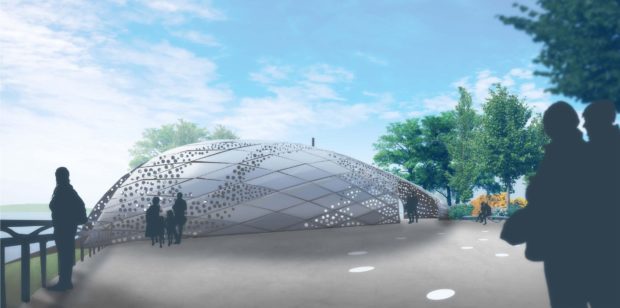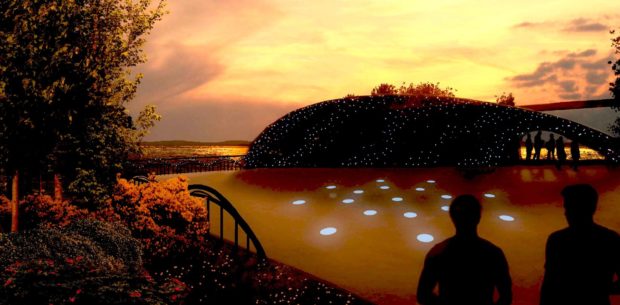Inverness Leisure is to be powered by electricity generated in the River Ness with technology taken straight from ancient Greece.
The Ness hydro scheme, approved by Highland councillors at their recent south planning meeting, will sit on the river at the head race of the lade at the Whin Park, close to the Holm Mill road bridge.
It features a turbine design attributed to Ancient Greek polymath Archimedes, and known as the Archimedes Screw.
The massive screw is supported inside a trough by bearings at each end, with a generator and gear box situated above it.
The weight of waters passing down the screw causes the blades to turn, ensuring the turbine efficiency remains high even at very low flow rates.
And the slow speed means fish or other debris can pass through unharmed.
The scheme, run by Highland Council, originally envisaged one Archimedes Screw, but has adjusted its original plans so that there will now be two in a structure 88ft long, 32ft high and 20ft wide.
The scheme is expected to generate 550,000kWh electricity annually feeding directly into the nearby Inverness Leisure centre.
It will offset the centre’s current spend by around £70,000 and reduce carbon emissions by 140,000kg C02e.
Planners say the structure won’t having an adverse impact on its setting in the Inverness riverside conservation area.
The public will be able to visit the building, which will lie beneath a futuristic sleek stainless steel perforated shell, designed to allow visitors to view the power generation at work.
The structure was designed by local artist Claire Maclean, inspired by the river, its aquatic life and Nessie mythology.
The building will be lit up at night, sparkling with LED lights powered by kinetic tiles coverting footsteps into electrical energy, something Archimedes might have marvelled at.
A hard landscaping area between the structure and path, installed for maintenance, will offer an opportunity for benches, and interpretation panels.
The council expects construction to begin next month, with the scheme fully commissioned by March 2022.

